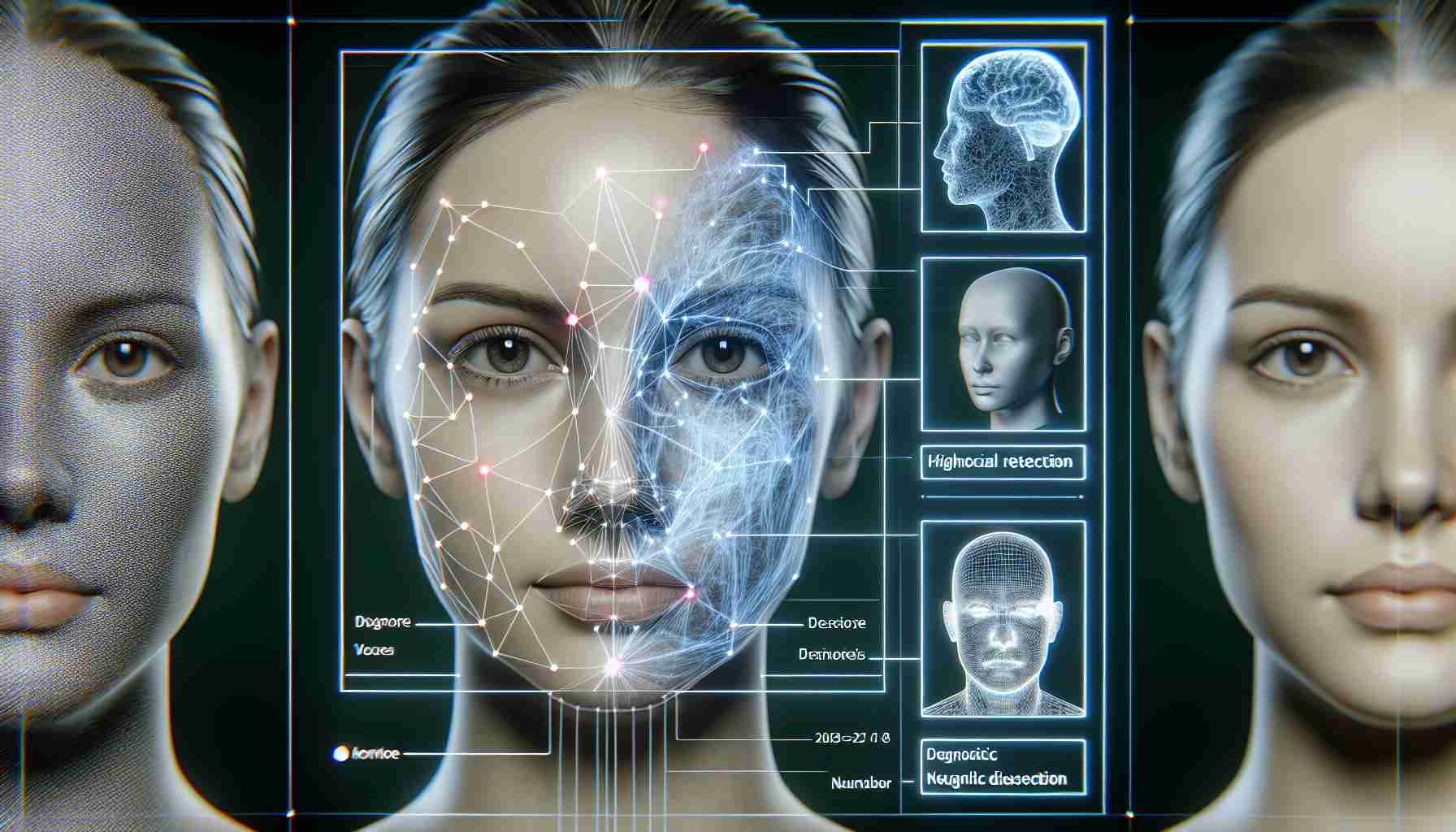An innovative smartphone tool powered by artificial intelligence may revolutionize stroke detection methods, offering paramedics the ability to identify a stroke within seconds by analyzing the patient’s facial features. By scanning for subtle signs of a stroke, such as facial muscle asymmetry and specific movements, the AI-driven tool has shown promising results in early detection.
The research team, led by Guilherme Camargo de Oliveira, a doctoral student at the University of Melbourne, has highlighted the significance of facial muscle behavior in stroke cases. Through advanced image processing and AI algorithms, the tool can accurately detect changes in facial symmetry, a key indicator of a potential stroke.
Initial trials of the smartphone tool showcased an impressive 82 percent accuracy rate in detecting strokes compared to traditional diagnostic methods. Professor Dinesh Kumar, the senior researcher, emphasized the tool’s potential to complement existing clinical assessments and improve timely stroke interventions.
While the smartphone tool does not aim to replace hospital-based diagnostic tests, it holds the promise of aiding paramedics in identifying stroke symptoms promptly, especially in cases where traditional screenings might be overlooked. By bridging the gap between symptom recognition and swift medical intervention, this technology has the potential to save lives and reduce the incidence of undiagnosed strokes.
Future developments of the tool include expanding its capabilities to recognize a range of neurological conditions beyond strokes, demonstrating a commitment to enhancing healthcare practices through innovative AI applications.
Stay informed about advancements in stroke detection and learn more about reducing the risk of stroke by accessing resources from reputable sources such as the Centers for Disease Control and Prevention (CDC).
Additional facts:
– Facial recognition technology is increasingly being leveraged in various medical fields, including dermatology, ophthalmology, and plastic surgery.
– AI-powered tools are also being explored for early detection of other medical conditions such as Alzheimer’s disease, Parkinson’s disease, and certain types of cancer.
– The use of AI in healthcare is becoming more prevalent due to its potential to improve accuracy, efficiency, and accessibility of medical diagnosis and treatment.
Most important questions:
1. How does the AI facial recognition tool differentiate between stroke-related facial features and other common facial expressions?
2. What are the ethical considerations surrounding the use of AI technology in healthcare, particularly in terms of patient privacy and data security?
3. How do healthcare providers integrate AI tools like this facial recognition tool into existing diagnostic workflows and treatment protocols?
Key challenges or controversies:
– Ethical concerns about data privacy and the potential for misuse of personal health information collected through AI facial recognition tools.
– The need to address issues related to algorithm bias and accuracy in order to ensure reliable and inclusive healthcare solutions.
– Resistance or skepticism from healthcare professionals towards adopting AI technologies due to concerns about job displacement or reduced human oversight in patient care.
Advantages and disadvantages:
Advantages:
– Rapid and non-invasive detection of stroke symptoms, enabling quicker medical interventions.
– Potential to supplement clinical assessments and improve overall accuracy in identifying strokes.
– Enhances accessibility to timely healthcare services, particularly in emergency situations.
Disadvantages:
– Reliance on technology may lead to the oversight of nuanced or complex symptoms that cannot be captured through facial recognition alone.
– The tool may not be as effective in cases where patients exhibit atypical stroke symptoms or facial features.
– Challenges related to the integration of AI tools into existing healthcare systems and workflows, potentially leading to resistance from medical professionals.
Suggested related links:
– Centers for Disease Control and Prevention
